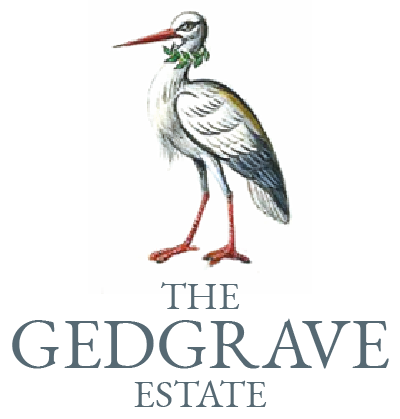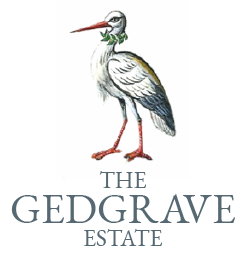
Land & nature
Land and nature
Almost all of the Gedgrave estate falls within the Suffolk Coast and Heaths Area of Outstanding Natural Beauty. This is characterised by estuaries winding inland, extensive Forestry Commission woodlands, and open arable farmland under wide skies.
About half the land at Gedgrave is in arable use, with the remainder being largely woodland, saltmarsh, and lightly grazed marshland. Apart from the usual range of farmland and woodland birds, there is also the wide variety of ducks, geese, waders and birds of prey living in and around the Alde-Ore estuary. The farm is in a ‘High Level Stewardship’ scheme, mostly focused on providing habitat for wading birds.
Woodland
There are roughly 200 hectares of woodland at Gedgrave, all of which is managed for timber and habitat. The woods are thinned from time to time, and natural regeneration, supplemented where necessary by new planting, maintains the timber resource. The best trees are used for sawlogs, and most of the rest is used for fuel, as woodchip or as seasoned firewood logs.
Farming
Most of the arable land is sandy and free-draining. It grows potatoes, cereals, sugar beet and a range of vegetables, all with the help of irrigation. It is close to the coast and to the Alde-Ore estuary, so has a particularly mild climate. The freshwater marshes around the estuary are grazed by sheep and cattle. Increasingly, our farming practices are directed at the preservation and improvement of soil health.

Nature restoration
Over the years, much land that was once arable has been returned to grass, managed with minimal inputs of fertiliser. We are now working on a scheme to raise water levels on c.100 ha of grass marshes for the benefit of nesting and overwintering wading birds.



